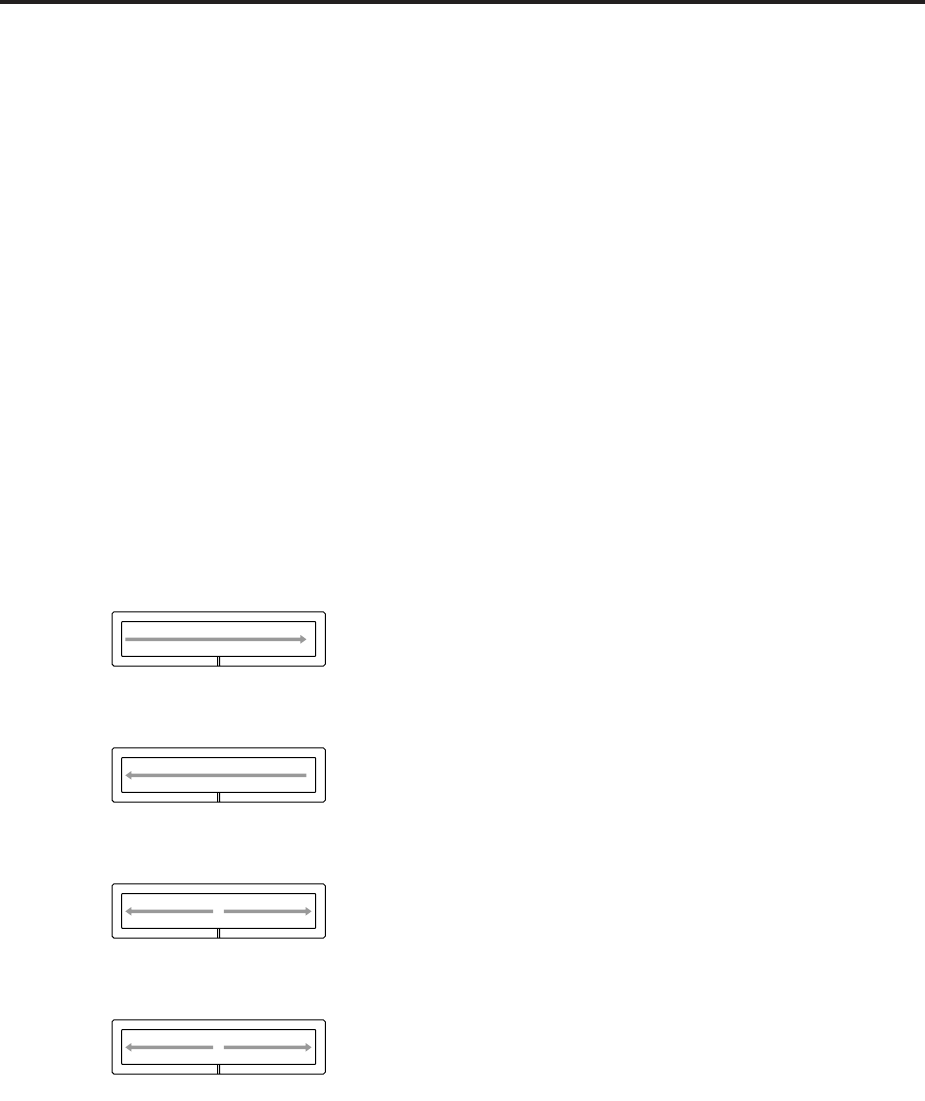
Appendices
990
Use this when you wish to stop the phrase or pattern
played by the KARMA module and simultaneously
switch to realtime note generation by Direct Index.
Direct Index 1 Way [Continuous]
The same as Direct Index (above), but only functions in
one direction of the selected controller. In other words,
if you were to assign a joystick to the normal Direct
Index setting above, the notes would sweep as you
move the joystick in one direction, and then sweep
back again as you return the joystick in the other
direction. With Direct Index 1 Way, the release does not
cause any note generation in the return direction - it
only indexes in one direction of movement. This is also
quite useful with the Ribbon #16 setting, since unless
“Ribbon Lock” is turned on, releasing the finger at one
end of the ribbon will “snap back” to the center value,
creating spurious notes on release (unless this setting is
used).
The Polarity setting choose which direction it operates
in. The following example shows the Dynamic MIDI
Source set to “Ribbon #16”. (Moving in the opposite
direction from what is shown produces no action.)
Polarity = +:
Polarity = –:
Polarity = +/–:
Polarity = –/+:
Note: Normally you should select a source from the
JS+Y (CC#01)…JS X controller group.
Dir.Idx 1 Way & Mdl Stop [Continuous]
Simultaneously with controlling Direct Index 1 Way
(described above), this also controls the Module Stop
function. The currently-running KARMA module will
stop when the first Direct Indexed note is generated.
Note: Normally you should select a source from the
JS+Y (CC#01)…JS X controller group,
Use this when you wish to stop the phrase or pattern
played by the KARMA module and simultaneously
switch to realtime note generation by Direct Index.
BufferLatch [Momentary, Toggle]
When on, allows input notes to be added to the group
of input notes that is causing the KARMA phrase to be
generated, even if you release the notes while playing
them.
Note: Normally you should select a source from the
JS+Y (CC#01)…JS X controller group.
Normally, playing a single C4 note will input just C4 to
the KARMA module, controlling the phrase or pattern.
If you release the C4 and then play a single B4 note,
just B4 will be input to the KARMA module. However,
if you turned Buffer Latch on when you played the
single C4 note, the KARMA module will maintain the
C4 even when you release the keyboard, so that when
you play a single B4 note, the B4 will be added. C4 and
B4 will be input to the KARMA module, controlling
the phrase or pattern.
Example
Settings (Program mode)
Dynamic MIDI 1 Source (7–7b): Damper(CC#64)
Dynamic MIDI 1 Bottom (7–7b): 000
Dynamic MIDI 1 Top (7–7b): 127
Dynamic MIDI 1 Action (7–7b): Momentary
Dynamic MIDI 1 Destination (7–7b): BufferLatch
Dynamic MIDI 1 Polarity (7–7b): +
Receive MIDI Filter Damper (CC#64) (7–2a):
Off (unchecked)
1. With the KARMA function on, play the keyboard.
Hold down the damper pedal, and play C4. The
chord will be detected as Cmaj, and a phrase based
on Cmaj will be played.
2. While continuing to hold down the damper pedal,
play B4. The chord will be detected as Cmaj7. If
you were not using Buffer Latch, the chord would
be detected as Bmaj.
3. Notes will be added until you release the damper
pedal and play the keyboard.
Since Receive MIDI Filter “Damper (CC#64)” is
turned Off (unchecked) in this example, the
damper pedal will not produce the conventional
damper effect when the KARMA function is on.
Use this when you want to add notes in this way to
modify the phrase or pattern.
Up
0 • • • • • • • • • 64 • • • • • • • • 127
Down
0 • • • • • • • • • 64 • • • • • • • • 127
UpDown
0 • • • • • • • • • 64 • • • • • • • • 127
DownUp
0 • • • • • • • • • 64 • • • • • • • • 127


















